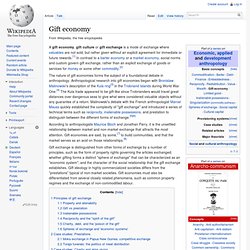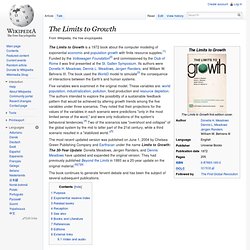

Gift economy. A gift economy, gift culture or gift exchange is a mode of exchange where valuables are not sold, but rather given without an explicit agreement for immediate or future rewards.[1] In contrast to a barter economy or a market economy, social norms and custom govern gift exchange, rather than an explicit exchange of goods or services for money or some other commodity.[2] According to anthropologists Maurice Bloch and Jonathan Parry, it is the unsettled relationship between market and non-market exchange that attracts the most attention.

Gift economies are said, by some,[7] to build communities, and that the market serves as an acid on those relationships.[8] Principles of gift exchange[edit] Property and alienability[edit] Gift-giving is a form of transfer of property rights over particular objects. Economy of the Iroquois. Iroquois women grinding corn or dried berries; note infant on cradleboard in background (1664 engraving) The economy of the Iroquois (also known as Haudenosaunee) historically was based on communal production and combined elements of both horticulture and hunter-gatherer systems.
The tribes of the Iroquois Confederacy and other Northern Iroquoian-speaking peoples, including the Huron, had their traditional territory in what is now New York State and the southern areas bordering the Great Lakes. The Iroquois Confederacy was composed of Five Nations: Mohawk, Onondaga, Oneida, Cayuga, and Seneca, who had created an alliance long before European contact. The Tuscarora were added as a sixth nation in the early eighteenth century after they migrated from North Carolina.
The Huron peoples, located mostly in what is now Canada, were also Iroquioan-speaking and shared some culture, but were never part of the Iroquois. Pierre Teilhard de Chardin. The Limits to Growth. Five variables were examined in the original model.

These variables are: world population, industrialization, pollution, food production and resource depletion. The authors intended to explore the possibility of a sustainable feedback pattern that would be achieved by altering growth trends among the five variables under three scenarios.